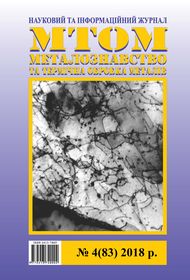Icing of aerodynamic surfaces: modelling the shape of large ice growths
DOI:
https://doi.org/10.30838/J.PMHTM.2413.261218.16.560Keywords:
numerical simulation, air-droplet flow, moisture precipitation on a streamlined surface, ice growing, shapes of ice accretions, icing of aerodynamic surfacesAbstract
Abstract. Statement of the problem. Numerical simulation of aircraft icing processes during the flight in adverse meteorological conditions is a pressing issue in ensuring flight safety. The data on the simulated shapes of large ice build-ups, which, in turn, depend on the flight conditions, can be used to assess the degree of negative influence of icing on the aircraft. Research methodology. For the numerical simulation of the icing processes of the aircraftaerodynamic surfaces software and methodological support were developed. When describing the external air-droplet flow and moisture precipitation on the streamlined surface, a model of interpenetrating media was used; when describing the process of ice growing, the surface control volumes method based on the equations of continuity and energy conservation was used. Results. The main shapes of large ice growths on NACA 0012 profile, streamlined with a two-dimensional two-phase viscous compressible flow, taking into account the surface roughness and the interaction of the air flow and supercooled drops were reproduced. Conclusions. The physical features of the icing process, leading to the formation of horn-like shapes of ice growths, were analyzed. The characteristic forms of ice build-ups in dry, wet and mixed icing modes were obtained. There is good agreement the obtained results with known experimental data. Studies of the effect of flight and meteorological parameters on the shape of ice buildup were carried out. The possibility of using the developed research tool to determine the most “dangerous”, in terms of the degree of influence of icing on the aircraft, the range of parameters was illustrated.
References
Tani I. Low-speed flows involving bubble separations. Progress in Aerospace Sciences, vol. 5, 1964, pp. 70–103.
Bragg M.B. and Khodadoust A. Experimental Measurements in a Large Separation Bubble Due to a Simulated Glaze Ice Shape. AIAA Paper 88–0116, Jan., 1988.
Alekseyenko S.V. and Prykhodko O.A. Numerical simulation of icing of a cylinder and an airfoil: model review and computational results. TsAGI Science Journal, vol. 44, iss. 6, 2013, pp. 761–805.
Alekseyenko S.V. and Prikhod’ko A.A. Mathematical Modeling of Ice Body Formation on the Wing Airfoil Surface. Fluid Dynamics, 2014, vol. 49, no. 6, pp. 715–732.
Spalart P.R. and Allmaras S.R. A one-equation turbulence model for aerodynamic flow. AIAA Paper, nо. 92 – 0439, 1992, 22 p.
Aupoix B. and Spalart P.R. Extensions of the Spalart-Allmaras Turbulence Model to Account for Wall Roughness. International Journal of Heat and Fluid Flow. vol. 24, 2003, pp. 454–462.
Roe P. L. Annual review of fluid mechanics. 1986, vol. 18, pp. 337–365.
Wright W.B. and Rutkowski A. Validation Results for LEWICE 2.0. NASA/CR-1999-208690, 1999, 674 р.
Alekseyenko S., Sinapius M., Schulz M. and Prykhodko O. Interaction of Supercooled Large Droplets with Aerodynamic Profile. SAE Technical Paper 2015-01-2118, 2015, 12 р.
Downloads
Published
Issue
Section
License
Authors that are published in this journal agree to follow the conditions:
Authors reserve the right to the authorship of his work and cede the right to the journal of first publication of this work on conditions of the license under the Creative Commons Attribution License, which allows others to distribute it freely with the obligatory reference to the author of the original work and the first publication of the work in this journal.

